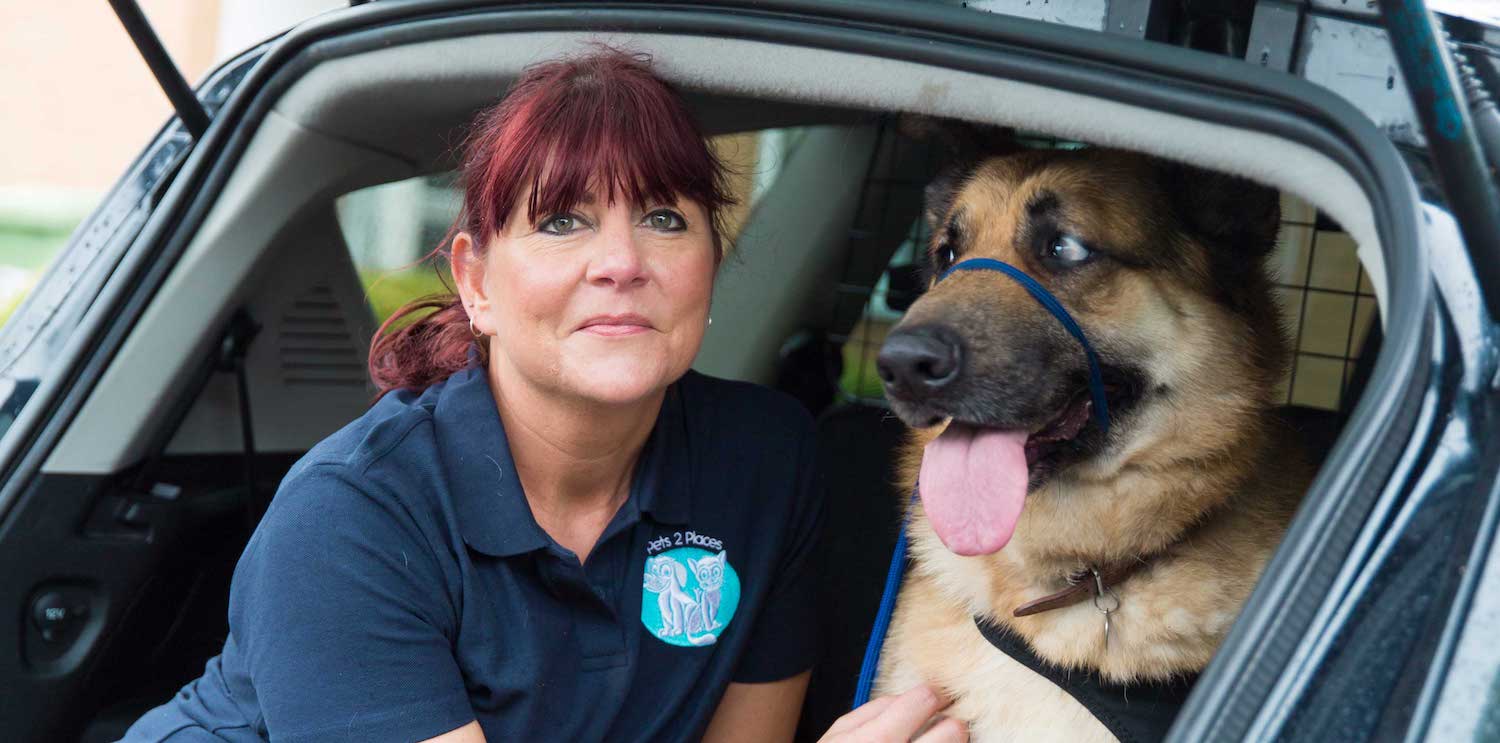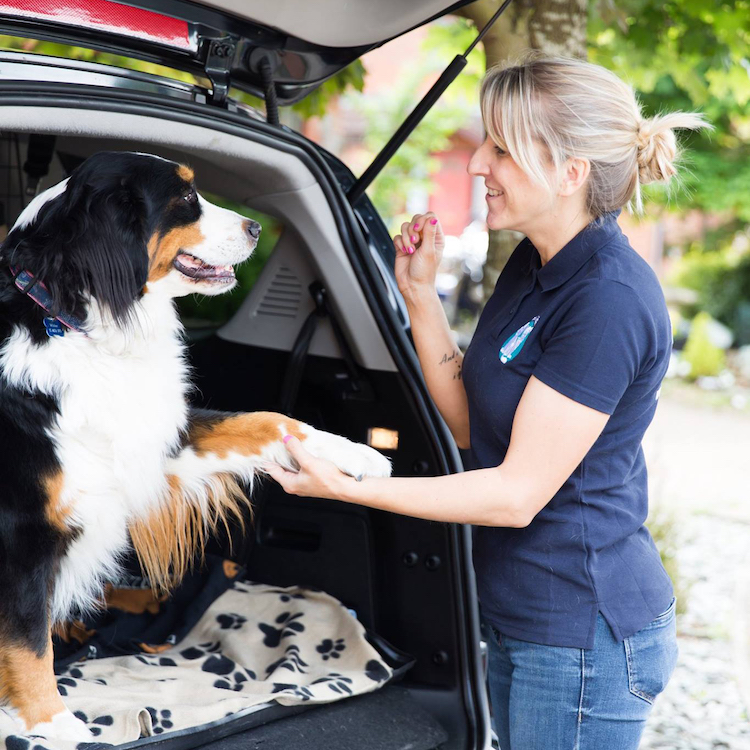
Car safety is something that we are all reasonably familiar with. From 1965 when seat belts were first introduced to them becoming mandatory for all passengers in 1991, we have as a society, become more aware of the dangers of car travel and how we can best protect our loved ones should we be involved in an accident.
So much so that from the early days of babies travelling on the back seat in a bassinet, we are seeing more advanced car seats that have been designed using NASA technology.
So, the question is why are we so far behind when it comes to travelling with our pets?
I do not believe that this due to a lack of care or compassion towards our furry friends, but rather a lack of awareness of the risks and consequences.
The good news is that pet transportation, or more accurately, the safe transportation of pets is now coming into focus as we realise that the safety and wellbeing of all passengers (including our pets) should be considered every time we take to the road.
Traditionally it was the norm to see little Fido in the footwell of the passenger seat (a big no no) or sat happily on little Jane’s lap with his head out of the window enjoying the wind in his ears.
Whilst you may believe that Fido is happy and content, the simple fact is this isn’t safe or legal.
How do you travel with pets?
Safe and comfortable pet transport is something that we are deeply passionate about so here is some helpful advice to know you are doing the right thing when travelling with your dog.
What’s legal, what’s not, do’s & don’ts and top tips.
“The more you can get a dog used to travelling the easier it will be for you both when needing to go in the car and less stressful in an emergency situation.”
Let’s start with some do’s and don’ts:
Do make sure your dog is happy to get into the car (take a look at our top tips below for support with this).
Do make sure your car is of a suitable temperature, not too hot or too cold (more tips below).
Do make sure you are using suitable restraints for the size and breed of your dog, preferably ones that are crash tested. There are a lot of options available so do your research and don’t be afraid to ask questions.
Don’t let your dog hang their head out of the window, yes it looks cute, but all kinds of bugs and dirt can get in their eyes are ears causing infection and pain and it can be a distraction to other drivers.
Don’t let your dog have free roam of the back seat, in the event of an accident it can cause injury to the dog and the other passengers. Think back to your school science days and understand that force = mass x acceleration. If you are forced to brake sharply at speed your beloved pooch suddenly becomes a deadly projectile.
- Don’t let your dog sit in the front of the car. Not only could your dog be injured if the air bag goes off, but, in the event of an accident, the other driver could say your dog distracted you which would invalidate your insurance
Top Tips
A car journey should be a fun experience for your dog, not traumatic. It’s always best to get your dog used to travel as soon as possible. If you have the dog from a puppy, take them out in the car to different places (once all injections are up to date of course). Include the vets and groomers on your travel to list. They will be happy to see your puppy even if just for a cuddle!
If you have a rescue dog this may take a bit more work. If the dog is scared of the car you may need to get a behaviourist to find out what the root cause is and go from there. Otherwise taking them on regular journeys to different places is always good. You don’t want your dog’s only car journey to be to the vets where they always end up getting an injection. They will end up associating the car with something negative. This is very hard to break once they’ve established a negative connotation with the car.
The more you can get a dog used to travelling the easier it will be for you both when needing to go in the car and less stressful in an emergency situation.

The boring legal bit
The legalities of transporting dogs at present aren’t very strict. The legal standpoint currently is that a dog must be restrained at all times when travelling in a vehicle.
The safety and wellbeing standpoint is that a dog should be restrained with crash-tested equipment suitable for their breed.

Your individual situation will determine how you travel with your dog.
Do you have a big boot?
Do you have luggage? Children?
If you have a big boot just for your dog/s I would recommend a crash-tested dog guard and tailgate. This way if the boot ever pops open the dog still cannot escape as long as the tailgate isn’t damaged. This is ideal if you have big dogs.
Dogs can be transported in crash-tested crates if your boot is big enough. Take a look at what’s on the market to suit your specific breed of dog and the type of car you have
If you have smaller dogs and only a back seat I would recommend crash tested harnesses.
Your dog should be comfortable, being able to sit up or lay down and have a relaxing journey. The specific crash tested harnesses on the market will allow you to achieve this.
A dog should not be able to reach the front seat from the back.
In order to keep the people safe in the vehicle, the correct equipment is very important. At present, the laws on transporting dogs have not yet been fully considered with the safety and wellbeing of the driver and all passengers on board.
This is something you as a dog owner need to consider. It is up to you to make sure you, your passengers and your pets are safe and secure at all times should you be involved in an accident, or even a rapid deceleration. Your beautiful 12 stone Rottweiler sat well behaved, but unrestrained, on the back seat could become the cause of significant injury as he hurtles forward.
Top Tips
- If your dog is sick, keep them facing forward with a window open.
- Sit them away from the window- looking out can actually increase their motion sickness.
- Leave 2 hours after feeding them before they travel.
- If sickness continues, contact your vet for prescription medication.
- To make sure your car doesn’t get too hot you can get a temperature gauge, don’t forget your dog has a fur coat on, so you may be cold and reach for the heating but your dog won’t thank you for it. You can put on a jumper or jacket but your dog has no option for removing layers.
- In hotter weather invest in some cool mats which your dog can sit on, keep bottled water to hand if your dog needs a drink or overheats (never pour cold water on a dog, keep it room temperature)
Want to travel with your dog but you do not have a car?
There’s a solution to every problem out there, so if you don’t have a car, take a look at a pet taxi!
A pet taxi is a relatively new concept and is as it sounds. A taxi that takes animals anywhere they need to go, whether that is the vets, groomers, kennels, over to visit a friend or even on holiday.
Our Expert
Pets 2 Places was founded in 2014 when Claire Harris, the founder, saw a gap in the market and filled that need with a service designed not only to cater to the needs of the animal but the owners too.
For more information:
